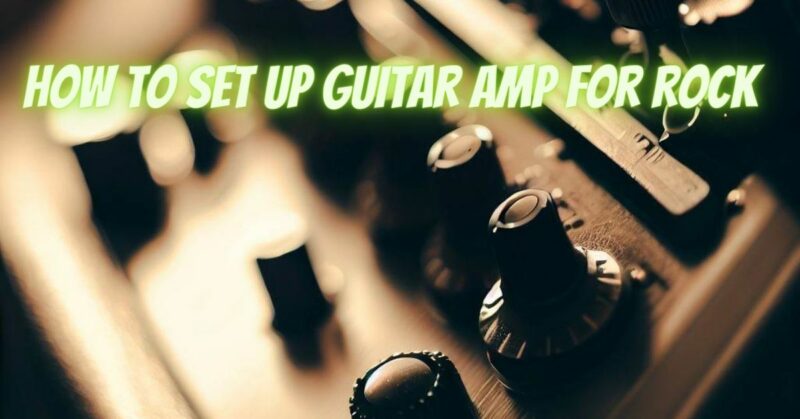Rock music is known for its powerful and aggressive sound, and setting up your guitar amp correctly is essential to achieve that iconic rock tone. Whether you’re playing classic rock, hard rock, or alternative rock, the right amp settings can make a significant difference in your sound. In this article, we’ll guide you through the steps of setting up your guitar amp for rock music, so you can unleash your inner rock star and rock the stage with confidence.
- Start with a Clean Slate
Before you dial in your rock settings, start with all the controls on your amp set to their minimum levels. This ensures that you begin with a clean sound and can build your rock tone from there.
- Dial in the Gain
The key to achieving a rock sound is the right amount of gain or overdrive. Start by setting your amp’s gain control to a moderate level. For classic rock tones, aim for a slightly crunchy sound with enough distortion to add some grit. If you’re going for a heavier hard rock or metal sound, increase the gain to get a more saturated and aggressive tone. Be careful not to go overboard, as too much gain can lead to a muddy and indistinct sound.
- Adjust the EQ
Next, focus on the EQ (equalization) controls on your amp. For rock music, a classic “smile” EQ curve can work well. Boost the bass slightly to add weight to your sound, cut the midrange a bit to avoid muddiness, and boost the treble to add brightness and clarity. The exact settings will depend on your guitar, amp, and personal preference, so experiment with different EQ settings to find the tone that suits your style.
- Tweak the Presence
If your amp has a presence control, adjust it to add some extra bite and definition to your sound. Turning up the presence can help your guitar cut through the mix and give it more punch, which is especially useful for rock music with a lot of distortion.
- Set the Master Volume
The master volume controls the overall output level of your amp. Depending on your playing situation, set the master volume to an appropriate level. For home practice or small gigs, keep the master volume at a moderate level to avoid overpowering the space. For larger venues or performances with a band, increase the master volume to ensure your sound is heard.
- Use Reverb Sparingly
While reverb can add depth and ambiance to your sound, it’s essential to use it sparingly for rock music. Too much reverb can muddy your tone and make it less defined. Set the reverb control to a subtle level to add a touch of space to your sound without overwhelming it.
- Experiment with Effects (if available)
Some rock styles incorporate effects like delay, chorus, or wah-wah. If your amp has built-in effects or you use external pedals, experiment with them to find the right combination for your rock sound. Again, use effects in moderation to maintain clarity and focus in your tone.
Setting up your guitar amp for rock music is a journey of experimentation and discovery. By adjusting the gain, EQ, presence, master volume, and reverb to your liking, you can craft a powerful and aggressive rock tone that suits your playing style. Remember to start with a clean slate and make gradual adjustments to find your ideal sound. With practice and experimentation, you’ll be ready to rock the stage and captivate your audience with the iconic sound of rock music.


